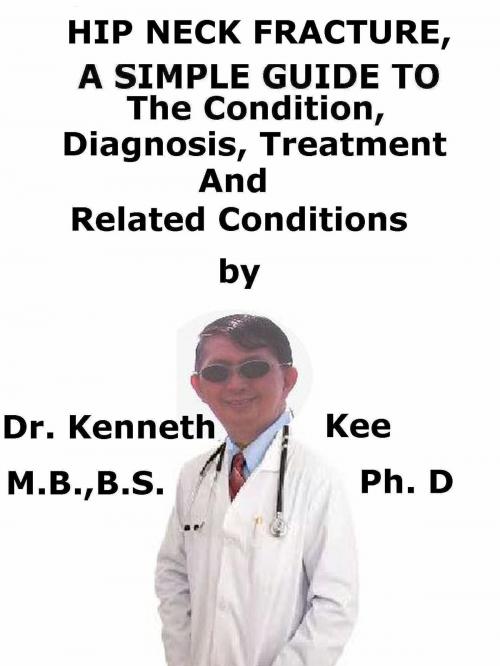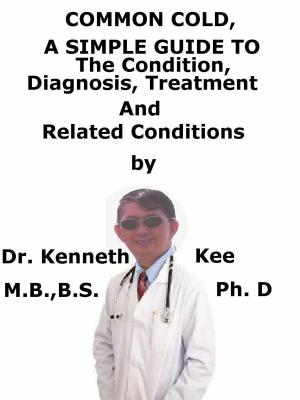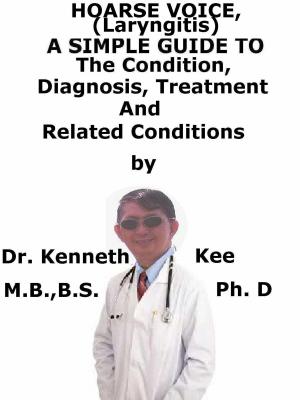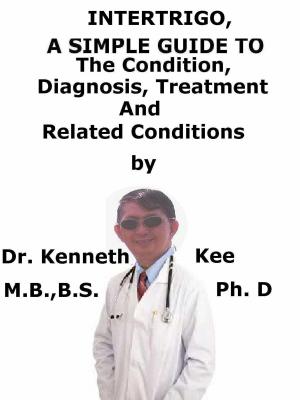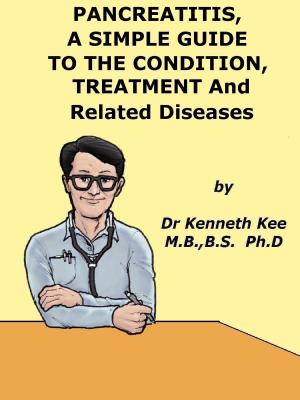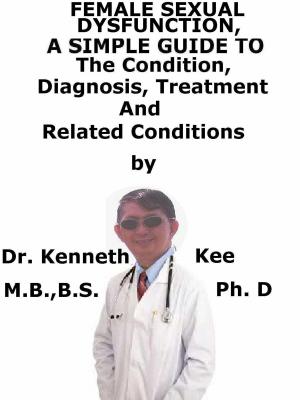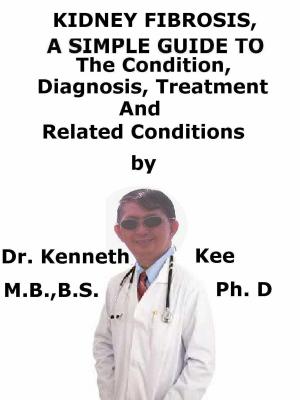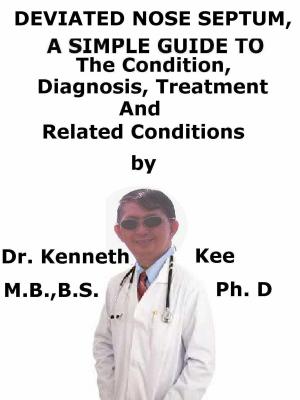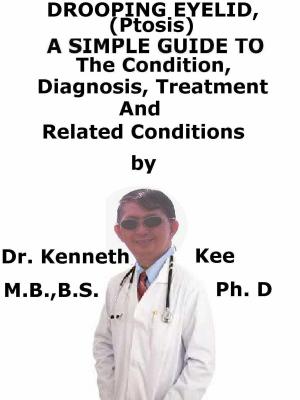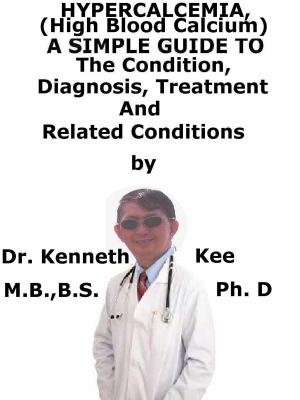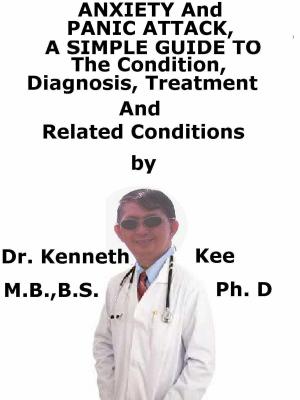Hip Neck Fracture, A Simple Guide To The Condition, Diagnosis, Treatment And Related Conditions
Nonfiction, Health & Well Being, Health, Ailments & Diseases, Musculoskeletal, Medical, Specialties, Orthopedics| Author: | Kenneth Kee | ISBN: | 9780463638279 |
| Publisher: | Kenneth Kee | Publication: | June 6, 2018 |
| Imprint: | Smashwords Edition | Language: | English |
| Author: | Kenneth Kee |
| ISBN: | 9780463638279 |
| Publisher: | Kenneth Kee |
| Publication: | June 6, 2018 |
| Imprint: | Smashwords Edition |
| Language: | English |
This book describes Hip Neck Fracture, Diagnosis and Treatment and Related Diseases
Hip Neck Fracture is becoming more frequent nowadays especially with old age.
Recently I had an elderly relative (man) who tripped on his walking stick (there was a stone below the stick which rolled away) and fell resulting in a hip neck fracture.
He underwent a total hip replacement and is now walking well.
Fracture of the neck of the femur is a very important injury for many causes.
It is frequent and the incidence is growing.
The main causes of fractured neck of femur require an understanding of falls and osteoporosis.
Patients with this injury often have many co-morbidities and the fracture has a large mortality rate.
Treatment of this injury is often used as a model for management of acute problems in the elderly.
Causes
A hip neck fracture means a fracture of the proximal femur (proximal to 5 cm below the lesser trochanter ).
Hip neck fractures are the most frequent reason for admission to an orthopedic trauma ward
Intra-capsular fractures involve the femoral neck between the edge of the femoral head and insertion of the capsule of the hip joint.
1.Around half of all hip fractures are intra-capsular.
2.Intra-capsular fractures may disrupt the blood supply to the femoral head, leading to avascular necrosis (AVN).
Extra-capsular trochanteric fractures (Distal to the insertion of the capsule, involving or between the trochanters)
They are inter-trochanteric or peri-trochanteric and reverse oblique fractures and isolated trochanteric avulsion fractures.
Isolated trochanteric avulsion fractures can occur from sudden violent force avulsing the insertion of gluteus medius from the greater trochanter, or iliopsoas from the lesser trochanter.
Mechanism of the femur neck fracture is due to:
1.The high energy in young patients
2.The low energy falls in older patients
The risk factors for a fractured neck of femur can be:
- Risk factors for falls and
- Risk factors for osteoporosis (some things e.g. alcohol, immobility may be risk factors for both).
Symptoms
An elderly patient with pain in the hip following a fall must be assumed to have a fractured neck of femur until proved otherwise.
Impacted and stress fractures
There is slight pain in the groin or pain referred along the medial side of the thigh and knee
Displaced fractures
The leg is in external rotation and abduction, with shortening
Diagnosis of the cause of the fall
It is also important to diagnose the cause of the fall as there may be a treatable cause e.g. postural hypotension, cardiac arrhythmia.
Diagnosis of the type of fracture
It is important to diagnose the type of fracture as this influences treatment.
Any elderly person who has hip pain or pain in the legs, even without a history of a fall, should also have an X-ray of the hip.
Treatment
ED
1.General workup CXR, intravenous access with intravenous infusion if indicated.
2.Analgesia should be sufficient for the patient and should permit the movements needed for investigations and for rehabilitation.
Intra-capsular fractures
1.Surgery should be done within one day of admission.
2.Undisplaced fractures require internal fixation with screws
3.Displaced intra-capsular fractures should be treated by replacement of the femoral head with an arthroplasty, if the person is fit for the procedure
Extra-capsular fractures
- Extra-capsular hip fractures are treated surgically unless there are medical contra-indications.
- They are usually treated by internal fixation but hip arthroplasty may be used (internal fixation may fail, especially for unstable fractures)
TABLE OF CONTENT
Introduction
Chapter 1 Hip Neck Fracture
Chapter 2 Causes
Chapter 3 Symptoms
Chapter 4 Diagnosis
Chapter 5 Treatment
Chapter 6 Prognosis
Chapter 7 Hip Osteonecrosis
Chapter 8 Fracture
Epilogue
This book describes Hip Neck Fracture, Diagnosis and Treatment and Related Diseases
Hip Neck Fracture is becoming more frequent nowadays especially with old age.
Recently I had an elderly relative (man) who tripped on his walking stick (there was a stone below the stick which rolled away) and fell resulting in a hip neck fracture.
He underwent a total hip replacement and is now walking well.
Fracture of the neck of the femur is a very important injury for many causes.
It is frequent and the incidence is growing.
The main causes of fractured neck of femur require an understanding of falls and osteoporosis.
Patients with this injury often have many co-morbidities and the fracture has a large mortality rate.
Treatment of this injury is often used as a model for management of acute problems in the elderly.
Causes
A hip neck fracture means a fracture of the proximal femur (proximal to 5 cm below the lesser trochanter ).
Hip neck fractures are the most frequent reason for admission to an orthopedic trauma ward
Intra-capsular fractures involve the femoral neck between the edge of the femoral head and insertion of the capsule of the hip joint.
1.Around half of all hip fractures are intra-capsular.
2.Intra-capsular fractures may disrupt the blood supply to the femoral head, leading to avascular necrosis (AVN).
Extra-capsular trochanteric fractures (Distal to the insertion of the capsule, involving or between the trochanters)
They are inter-trochanteric or peri-trochanteric and reverse oblique fractures and isolated trochanteric avulsion fractures.
Isolated trochanteric avulsion fractures can occur from sudden violent force avulsing the insertion of gluteus medius from the greater trochanter, or iliopsoas from the lesser trochanter.
Mechanism of the femur neck fracture is due to:
1.The high energy in young patients
2.The low energy falls in older patients
The risk factors for a fractured neck of femur can be:
- Risk factors for falls and
- Risk factors for osteoporosis (some things e.g. alcohol, immobility may be risk factors for both).
Symptoms
An elderly patient with pain in the hip following a fall must be assumed to have a fractured neck of femur until proved otherwise.
Impacted and stress fractures
There is slight pain in the groin or pain referred along the medial side of the thigh and knee
Displaced fractures
The leg is in external rotation and abduction, with shortening
Diagnosis of the cause of the fall
It is also important to diagnose the cause of the fall as there may be a treatable cause e.g. postural hypotension, cardiac arrhythmia.
Diagnosis of the type of fracture
It is important to diagnose the type of fracture as this influences treatment.
Any elderly person who has hip pain or pain in the legs, even without a history of a fall, should also have an X-ray of the hip.
Treatment
ED
1.General workup CXR, intravenous access with intravenous infusion if indicated.
2.Analgesia should be sufficient for the patient and should permit the movements needed for investigations and for rehabilitation.
Intra-capsular fractures
1.Surgery should be done within one day of admission.
2.Undisplaced fractures require internal fixation with screws
3.Displaced intra-capsular fractures should be treated by replacement of the femoral head with an arthroplasty, if the person is fit for the procedure
Extra-capsular fractures
- Extra-capsular hip fractures are treated surgically unless there are medical contra-indications.
- They are usually treated by internal fixation but hip arthroplasty may be used (internal fixation may fail, especially for unstable fractures)
TABLE OF CONTENT
Introduction
Chapter 1 Hip Neck Fracture
Chapter 2 Causes
Chapter 3 Symptoms
Chapter 4 Diagnosis
Chapter 5 Treatment
Chapter 6 Prognosis
Chapter 7 Hip Osteonecrosis
Chapter 8 Fracture
Epilogue
